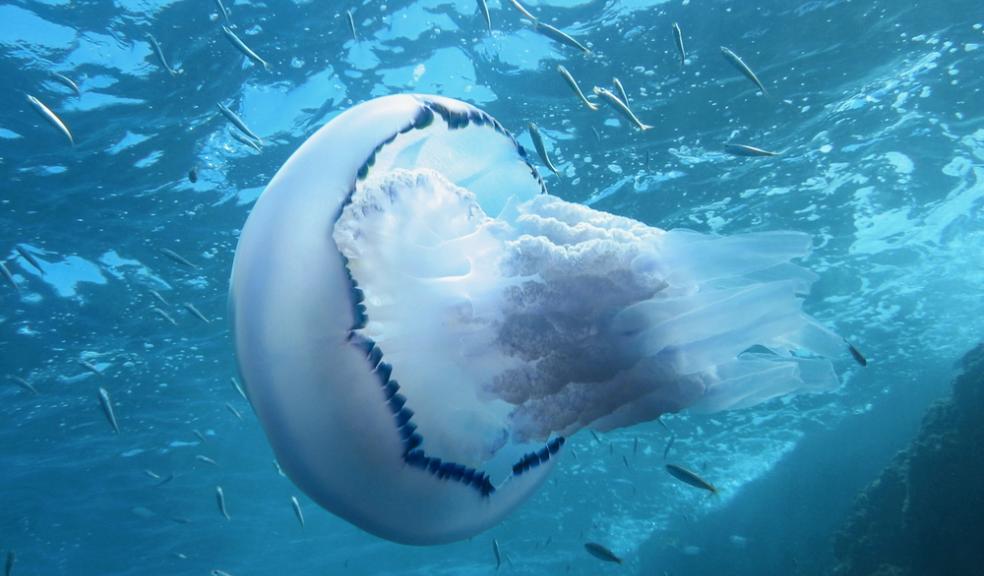
Another big year for jellyfish smacks
Massive barrel jellyfish have appeared in record numbers for a second consecutive year, whilst in July huge numbers of mauve stingers were reported off Guernsey, and the potentially dangerous Portuguese Man O War has been washing up on beaches in the South West.
The rise of jellyfish in UK seas can no longer be ignored, and that more dedicated research and monitoring is needed to understand these apparent increases and what they mean for the state of our seas.
“Our National Jellyfish Survey suggests significant recent rises in the numbers of some jellyfish species in UK seas, most notably the barrel. The million-dollar question is why is this happening? At the moment we just don’t know,” says Dr Peter Richardson, MCS Biodiversity and Fisheries Programme Manager.
The MCS Jellyfish Survey started in 2003 and involves thousands of sea and beach-going public reporting their jellyfish encounters online at the MCS website. 2013 was a record year, with the survey receiving over 1,000 reports involving hundreds of thousands of jellyfish.
Last year the number of reports increased again to over 1,400 reports, and by July this year the survey had already received over 1,000 reports. August is usually a peak month for jellyfish sightings and so 2015 looks set to be another record breaker.
Barrel jellyfish normally make up 10% of its annual reports, but last year they made up 40%. So far in 2015, a whopping 75% of records have involved barrel jellyfish sightings.
“We know that our seas are changing through climate change, resulting in rising sea temperatures and increased ocean acidification, and we know our seas are also heavily fished. At the same time we seem to be witnessing increases in jellyfish around the UK. Is this an anomaly, a coincidence, or are the jellyfish telling us something about fundamental changes in the condition of our seas?” says Dr Richardson.
Huge ‘smacks’ of jellyfish are not a new phenomenon, with jellyfish blooms having been found in the fossil record over 500 million years. Nowadays they can have important economic and social consequences. Moon jellyfish blooms have forced the closure of UK nuclear power stations, leading to the industry investing in remote sensing mechanisms to detect increases in jellyfish near power plants. In the UK large blooms of mauve stinger jellyfish have wiped out salmon stocks in fish farms, while the same species regularly closes down bathing beaches in the Mediterranean due the animal’s painful sting.
“People are fascinated by jellyfish and that’s why our survey is one of our most successful citizen-science projects,” says Dr Richardson. “But we believe there is now a need for UK Government to commission dedicated scientific research and monitoring to answer pressing questions about what is happening to jellyfish numbers, why it is happening and what this means for our precious and productive seas.”
The Marine Conservation Society advise people to report jellyfish sightings online here.
But a note of caution if you spot jellies - look at, but don’t touch jellyfish because their stings can range from mild to very painful!
UK jellyfish in 2015 at a glance:
- Barrel jellyfish: Reported throughout the year all around the UK, but most 2015 reports from South and SW England. 75% of records this year have involved barrel jellyfish.Moon jellyfish: Started to appear in May, by July were reported all around the UK
- Blue jellyfish: Started to appear in May, by July were reported all around the UK
- Compass jellyfish: Started to appear in June, with most reports in July from South West England, South West Wales and North West England
- Lion’s mane: Started to appear in May, by July were reported all around Scotland, Northern Ireland and Wales.
- Portuguese Man o War: About 30 reports from Devon and Cornwall in July
- Mauve stinger: Unprecedented numbers recorded off Guernsey in July
- By the Wind Sailor: Several reports from SW England in January, then a few in July











